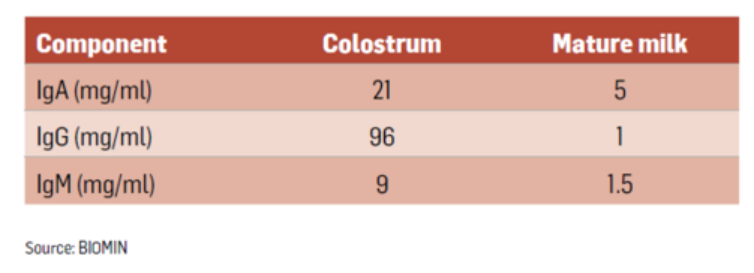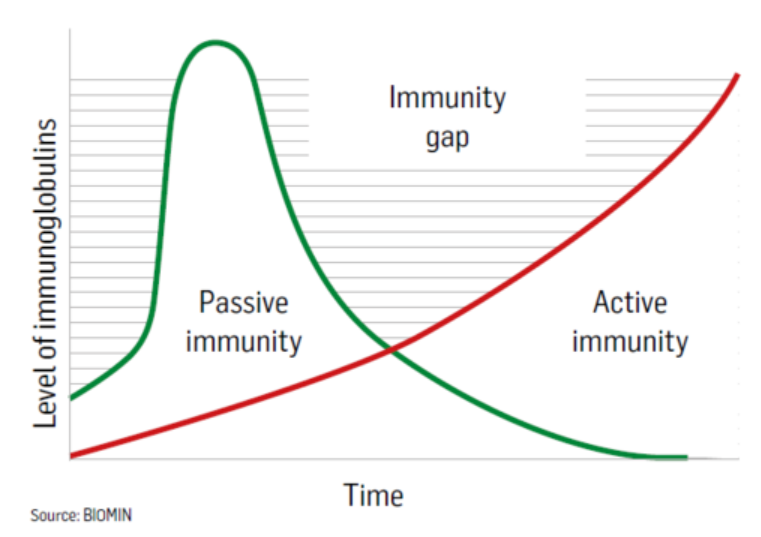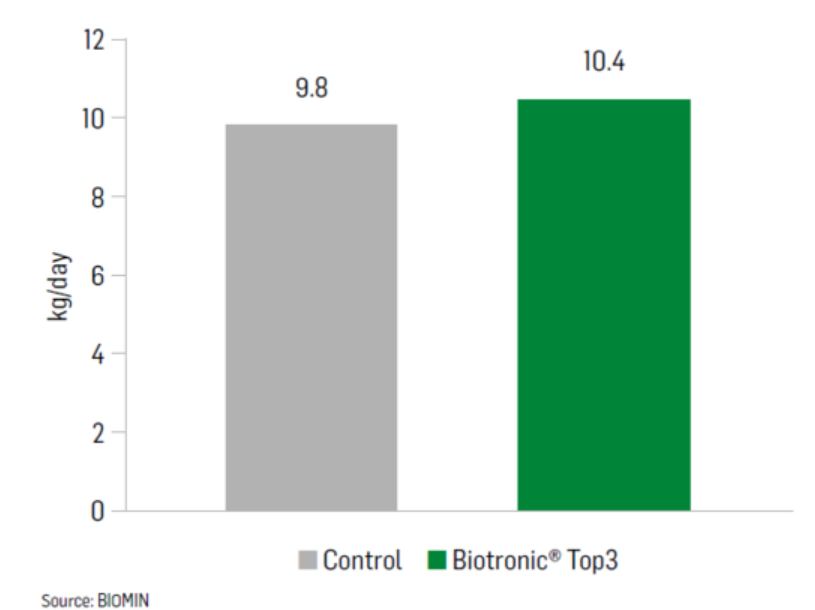



Guarantee swine herd success by following these 10 management tips
Piglets and sows are the two most important groups of animals in a swine herd. Follow these 10 tips to help get the most from your herd.Operational efficiency is key for pig producers to stay competitive and be successful. That means effectively converting feed, which accounts for approximately 75 percent of total production costs, into pork.
In addition, the greater genetic potential of animals is changing the standard approach to production methods. Working with high-producing, prolific sows requires a change in management, improving environmental conditions and paying close attention to high biosecurity standards.
Sow management requires investment in feed, skilled labour and other overheads that are not directly linked to sow productivity. The conclusion is simple: the fewer piglets a sow produces per year, the more expensive production is. As the number of piglets weaned per sow per year increases, the profitability of production also increases.

Management tip 1 - measure piglet birth weight
The first key area is ensuring the sow is properly prepared before farrowing. The second key area is farrowing itself, which has a big impact on newborn piglets. Piglet birth weights should be optimised to guarantee optimum survival rates. Depending on the number of piglets in a litter, the birth weight should not be lower than 1.4kg. In large litters, piglets can weigh 1.2kg at birth, but this difference in body weight leads to a difference in weight at weaning. For example, a difference of 1kg in birth weight equates to a difference of 1.75kg in body weight after 23 days of lactation (Figure 1).
Management tip 2 - record farrowing times
The length of time taken for farrowing should be monitored. Usually, a sow needs 15 - 20 minutes to give birth to one piglet, which means that the farrowing process for a litter of 15 piglets should take no longer than 4.5 - 5 hours. This amount of time allows each newborn piglet enough time and strength to start searching their way to the mammary gland for their first feed of colostrum.


Management tip 3 - monitor colostrum intake
The vitality of a piglet in the first hours after birth has a key influence on its future development. The intake of colostrum should occur as early as possible to guarantee assimilation of the immunoglobulins necessary to develop an active and robust immune system. The composition of colostrum changes very quickly in the hours after farrowing. Crude protein content decreases from 15 percent in colostrum to only 5.5 percent in milk. As crude protein contains immunoglobulins, that content also changes rapidly. A comparison of the nutrient content of sow colostrum and sow milk is shown in Table 1. The immunoglobulin content is shown in Table 2
Management tip 4 - add nutritional supplements in early life
Special nutritional products can be used to support the vitality of small or weak piglets just after birth. Liquid compositions of essential oils are used for their appetising, strong antimicrobial and anti-oxidative effects. Additionally, they may contain medium-chain fatty acids, which supply piglets with the rapid energy they need. Supplementation of vitamin E supports the development of the immune system. Such products are able to support weak piglets on their first day of life to reduce mortality during the first few hours after birth. A typical dose is 1 - 2 ml per piglet, administered directly into the mouth once, twice, or three times per day after which increased piglet vitality can be expected.
Management tip 5 - support early immune system development
Newborn piglets have passive immunity received from the mother during the prenatal period. After birth, passive immunity decreases over the course of several days, stimulating the development of the innate immune system based on early colostrum intake. The piglet absorbs the highest quantity of immunoglobulins from the colostrum in the first 12 hours after birth. Over time, the amount of immunoglobulins in the colostrum and milk decreases, as does the piglets’ opportunity to absorb them.
Management tip 6 - bridge the immunity gap
Weaning is a critical life cycle stage for piglets. One of the reasons for this is the change from liquid feed (milk) to solid creep feed. The second reason is the immunity gap, which appears around the weaning period (Figure 2). Between the third and sixth week of life, passive immunity decreases and active immunity increases. In this critical period, piglets do not yet have enough active immunity, and they are no longer protected by passive immunity. If breeders make management mistakes during this time, for example the environment is not optimised for piglet development or the feed is not well adjusted, it creates a lot of problems including diarrhoea, weight loss, and other health problems.

Management tip 7 - use phytogenic feed additives in sow diets to boost milk production
When managing prolific sows, additional feed supplementation to increase colostrum and milk production should be considered. Phytogenic feed additives (PFAs) added to sow diets during gestation and lactation help to improve both the quantity and the quality of colostrum and milk. Phytogenic components improve the digestibility of particular dietary nutrients. Endogenous enzyme secretion is much higher when diets are supplemented with PFAs compared to diets without PFA supplementation. By improving the digestibility of feed, sows absorb more nutrients and are therefore able to produce more, better quality milk, as proven by many scientific and commercial trials.
The best and easiest way to assess sow milk production is to monitor the weaning weight of piglets. Comparing data from before and after PFA supplementation will highlight differences. Piglets of sows fed PFA-supplemented feed are typically between 250 – 400 grams heavier at weaning than control piglets. Other factors to be considered include genetic potential, herd management, health status, nutrition and human labour.
Management tip 8 - use PFAs to improve sow health
PFAs, which are products derived from essential oils, herbs and spices, have other properties including anti-inflammatory effects. This means that PFAs can help to create a barrier against pathogens in the gut, improving the health status of sows. This plays an important role for proper management of the main herd
Management tip 9 - use acidifiers to promote feed intake
Another factor that can influence milk production is acidification. Using well-balanced acidifiers in the feed helps to control the acid-intolerant bacteria, e.g. Gram-negative bacteria, thus promoting a beneficial microflora in the gut. Acidification can also improve feed hygiene. When the right acids are included in the diet, sows are able to take in more feed which results in up to 0.5 l/day of extra milk as shown in Figure 3.

Management tip 10 - ensure water supply is of adequate quality and quantity
The supply of fresh, clean water is often overlooked when managing sows. Sows need water just as piglets, and growing and finishing pigs do. However, sows have to produce milk and thus need to drink much more water compared to the other groups. To produce 1l of milk, a sow needs to drink 2.5l of water. During the gestation period, a sow drinks around 15-20l of water per day. Sows in the lactation period need more than 22l of water per day, depending on the size of their litter.
Water flow should be regularly checked to ensure the flow rate is not too low. The flow rate for sows in the gestation period should be at least 3 l/min, and for sows in the lactation period at least 4 l/min.
Taking care of piglets from the beginning by creating an optimal environment (with optimal temperature, humidity, air flow), advanced biosecurity and skilled labour is the only way to achieve high breeding results. The potential of the whole herd depends on the quality of the piglets.
In brief
- Achieving optimal results in swine production involves close management of all animals, but piglets and sows in particular
- Giving piglets the best possible start in life will positively affect the future performance of the herd
- Nutritional supplements such as PFAs and acidifiers incorporated into sow diets promote newborn piglet health and sow performance during farrowing and lactation








